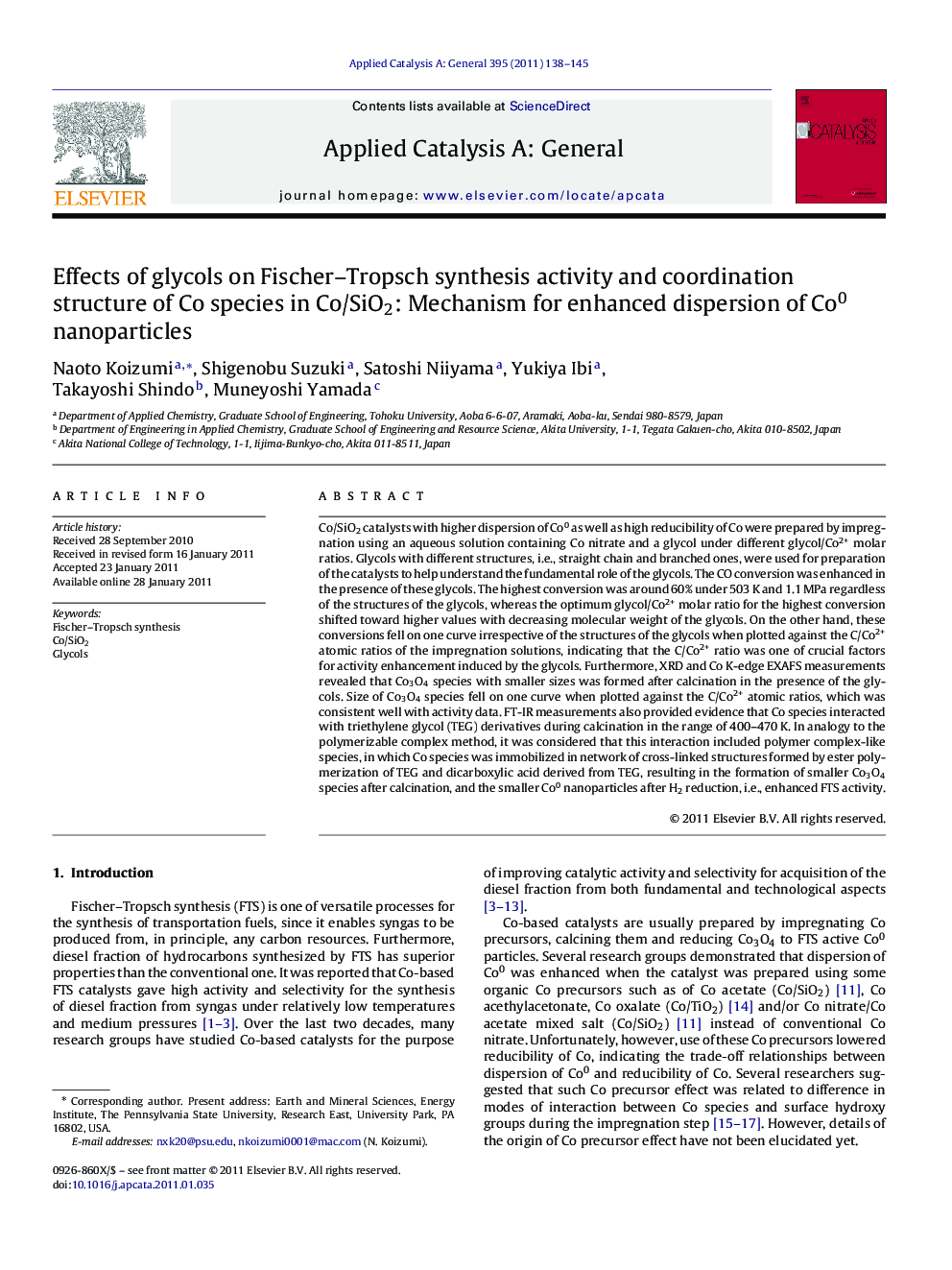| کد مقاله | کد نشریه | سال انتشار | مقاله انگلیسی | نسخه تمام متن |
|---|---|---|---|---|
| 41513 | 45891 | 2011 | 8 صفحه PDF | دانلود رایگان |

Co/SiO2 catalysts with higher dispersion of Co0 as well as high reducibility of Co were prepared by impregnation using an aqueous solution containing Co nitrate and a glycol under different glycol/Co2+ molar ratios. Glycols with different structures, i.e., straight chain and branched ones, were used for preparation of the catalysts to help understand the fundamental role of the glycols. The CO conversion was enhanced in the presence of these glycols. The highest conversion was around 60% under 503 K and 1.1 MPa regardless of the structures of the glycols, whereas the optimum glycol/Co2+ molar ratio for the highest conversion shifted toward higher values with decreasing molecular weight of the glycols. On the other hand, these conversions fell on one curve irrespective of the structures of the glycols when plotted against the C/Co2+ atomic ratios of the impregnation solutions, indicating that the C/Co2+ ratio was one of crucial factors for activity enhancement induced by the glycols. Furthermore, XRD and Co K-edge EXAFS measurements revealed that Co3O4 species with smaller sizes was formed after calcination in the presence of the glycols. Size of Co3O4 species fell on one curve when plotted against the C/Co2+ atomic ratios, which was consistent well with activity data. FT-IR measurements also provided evidence that Co species interacted with triethylene glycol (TEG) derivatives during calcination in the range of 400–470 K. In analogy to the polymerizable complex method, it was considered that this interaction included polymer complex-like species, in which Co species was immobilized in network of cross-linked structures formed by ester polymerization of TEG and dicarboxylic acid derived from TEG, resulting in the formation of smaller Co3O4 species after calcination, and the smaller Co0 nanoparticles after H2 reduction, i.e., enhanced FTS activity.
Figure optionsDownload high-quality image (416 K)Download as PowerPoint slideResearch highlights
► Impregnation of aqueous solution of Co nitrate and glycol enhanced FTS activity.
► Calcination temperature had an impact on activity enhancement induced by glycols.
► Smaller Co3O4 species were formed after calcination in the presence of glycols.
► Specific interactions between Co and glycol derivatives were observed during calcination.
Journal: Applied Catalysis A: General - Volume 395, Issues 1–2, 15 March 2011, Pages 138–145